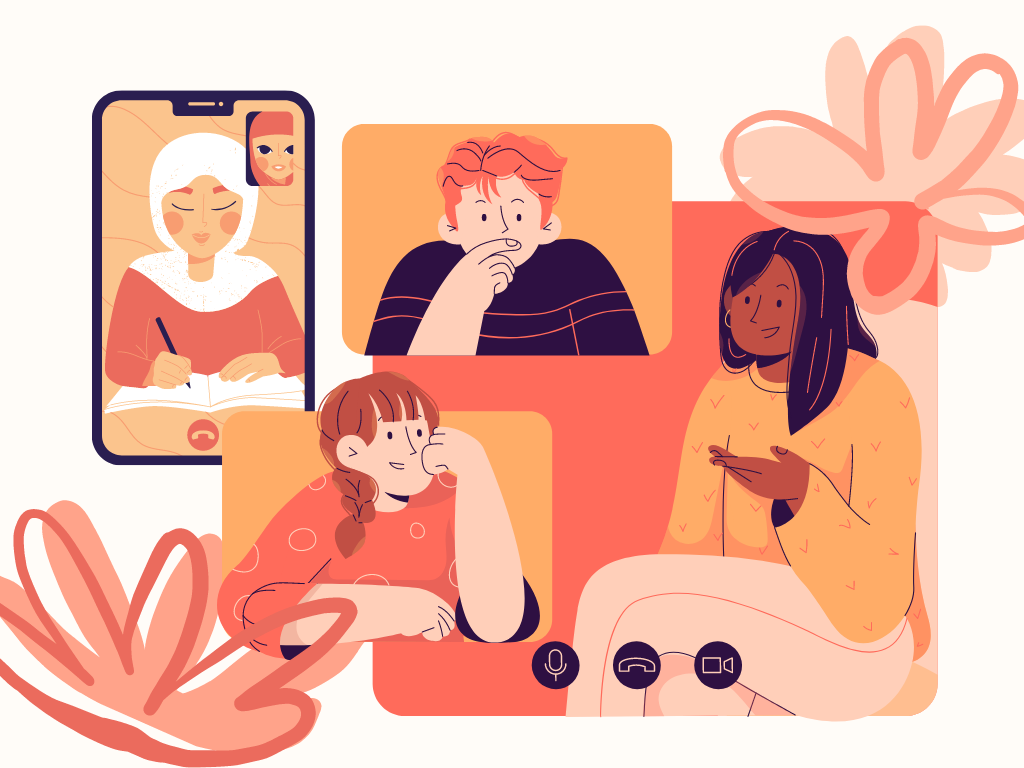How to address the digital and social divide remotely
We all know that teaching remotely is hard. But what about learning remotely? How are students coping? Are they learning?
I always start my lectures with a simple question: “How are you coping?” During the first weeks of lockdown, I received mostly a “meh”. I guess the situation was so unique that students were almost amused to have their classes moved online and their exams canceled. What a relief. But then, after the first week went by, the ambiance changed. Stress and anxiety took over. Isolation started to look serious. And well, some students just disappeared.
This fall, things didn’t get any better. Going back to normal is not on our agendas anymore.
As an educator, how do you meet the diverse needs of each student? How do you promote equity in an online classroom? How can you ensure each student has the same opportunities to learn and thrive? How do you address the digital and social divide remotely?
In this post, I will go through three strategies to promote equity in a virtual, remote classroom.
#1. Start with Empathy
Everything starts with empathy. Empathy is the ability to sense other people’s emotions and the ability to imagine what someone else might be thinking or feeling.
Like us, students are going through uncertain times. Many are struggling, and learning is not on their top priorities. Others are trying to stay focus and on track, but distractions keep coming their way.
This pandemic hasn’t been easy on them. Graduations were canceled. Transitions from one school to another were dismissed. Goodbyes were moved to phone calls. Nothing was smooth, and we have no idea when and how things will move forward.
When I ask my students how they are coping and how they feel about remote learning, most of them express anxiety. Many feel lost. “It’s hard to concentrate”, “my connection is terrible”, “I have a hard time with the software” are some feedback I frequently get from students.
Before we can address any learning, we need to care. We need to show our students we are here for them. We need to remember that not every student has the access to technology, or to a quiet study room, or to the needed materials. Some of them have to take care of their siblings while their parents work. Others have to work to pay their rent, meals, and education. Some of them might be going through traumatic or post-traumatic situations, they might have lost someone to Covid-19, their parents might have lost their jobs.
The last thing these students need is more homework, more applications to manage, more strict deadlines. They need empathy.
We, as teachers, need to imagine the entire story. Before we frame a student for laziness, we should reach out and try to understand and support them every time we can.
Having an empathetic approach is not only essential to learning and promoting equity in a classroom, but it also encourages students to develop empathy for others. Empathy increases the sense of community and fosters relationships based on trust and tolerance within and outside the classroom.
#2. Provide Different Opportunities to Learn
Remote learning can be exhausting and annoying. I know, from experience, that having 3 straight hours of a virtual lecture is painful. I, for example, cannot bear more than 20 minutes of a webinar without doing something else in parallel. Why should I expect more from my students?
Remote learning shouldn’t mean 100% screen learning. There are plenty of opportunities to learn (and to teach) remotely that don’t involve screens. Also, there are a plethora of activities that can be carried asynchronously.
If we want to promote equity in our classroom, we need to provide students with different opportunities to learn. This means that when we plan for activities and assessments we have to think about learning styles, access to technology, and technical skills.
Some students learn better through visuals. Others learn by practicing. Some rely on memory to absorb knowledge. As educators, we need to think of alternative learning approaches to ensure every student grasps as much knowledge and skills as possible.
Instead of asking students to hand in an essay on a topic, suggest different ways for achieving the learning outcome. I usually give students the possibility to choose the format of their work. They can choose between writing, making mind-maps, recording videos, or recording podcast series.
You can imagine also having multiple activities, both synchronous and asynchronous, to convey the same idea. You could, for example, host an online quiz on a topic and also ask students to reflect on the topic by recording a video or writing a blog post. Use different content and vary the assessment methods. The possibilities are vast. The more occasions for learning your students have, the more likely they’ll actually learn.
#3. Ensure Technology Access and Knowledge
Not every student has the same access to technology. Not every student has the same technical skills to manage those technologies.
Is not because they are digital natives that they can quickly adopt new software or applications and be at ease.
Some students don’t even have a laptop or a stable internet connection at home. Many rely on one computer for the entire household. Others are constrained to follow their classes on their phones. In these circumstances, how can you ensure technology access for each student?
While there are some institutions and governments equipping low-income students with laptops, there are still many that don’t have access to any financial aid. And even when the equipment is provided, many students don’t have the technical skills demanded by the different software and applications used in the virtual classroom.
I truly believe in the potential of technology for education, but I also know that it can cause more isolation and disparity in the classroom if not addressed properly.
When choosing the technology and virtual tools for your classroom, make sure you check this list:
- It is available at no cost for students, or the institution can pay for students’ licenses.
- It is compatible with all operating systems and devices.
- It integrates easily with other applications and technologies used by students and the institution, like the LMS from your school, the video conferencing tool you use, etc.
- There is an installation and getting started users’ guide. Otherwise, create a short and simple one for your classroom.
- Students have access to video tutorials and technical forums.
- It runs with slow internet speed or no internet connection.
Once you check these, make sure the technology you choose increases the student learning experience and skill development. Ask yourself how these technologies help you and your students achieve their learning goals? What is the added value for you and for them?
I also recommend devoting at least one session at the beginning of the semester to help learners familiarize themselves with the applications. If you are afraid it takes too much of your class time, you can prepare some getting-to-know-the-tool activities to complete in asynchronous before class.
I, for example, give students access to the tools one or two weeks in advance. I usually send them preparatory activities just to get used to the applications. So when we use it in class, they don’t discover something completely new. While not every student will do the assignment in advance, those who did can help others, this facilitates the initiation with the tools.
Final Thoughts
Effective remote learning and equity in the classroom rely on empathy. The more we put ourselves in students’ shoes, the more we can imagine better opportunities for learning.
It is important that, as educators, we promote a fair and welcoming remote learning environment for our students. We need to think about accessibility, empowerment, engagement, and students’ special needs.
Learning remotely is challenging, but there are avenues to make it better. It takes only a few simple tweaks of mindset but a lot of care. We need to make it better and accessible to all our students.
For sure we won’t be able to control everything, especially the injustices that subsist outside the classroom, but we can provide scaffolds and support systems that help students learn and thrive.
If you, like me, are interested in making your online classes more engaging, then I’d love to hear what are your strategies and tools you are using in your classroom. Drop your comments with ideas or questions here below.
Ready to shift to Online Education? Subscribe to my newsletter and receive monthly tips and tricks on how to make your online classes more engaging.

